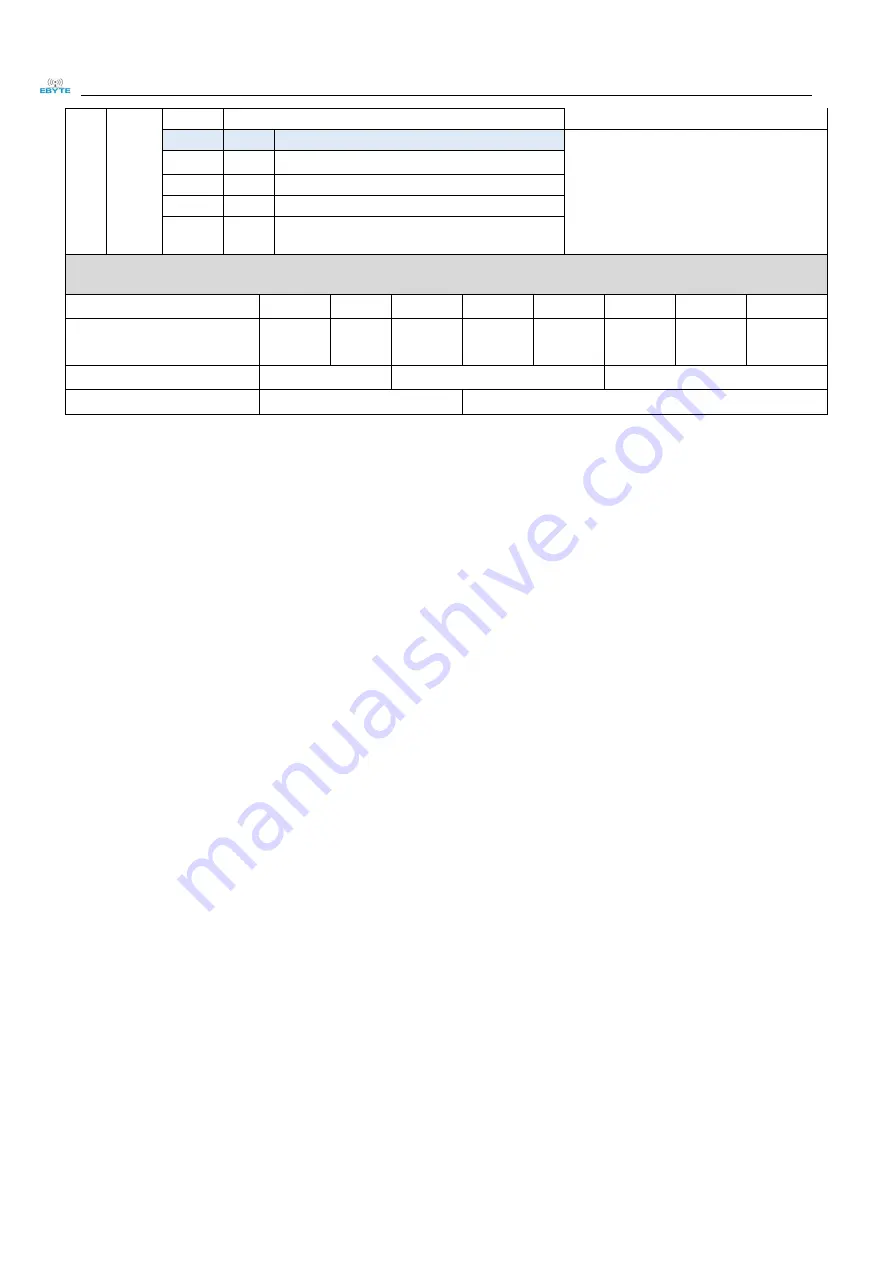
Chengdu Ebyte Electronic Technology Co., Ltd.
Copyright ©2012–2018, Chengdu Ebyte Electronic Technology Co.,Ltd.
12
1
0
Transmitting power(Approximate value)
The external power must make sure the
ability of current output more than 200mA
and ensure the power supply ripple within
100mV;
Low power transmission is not recommended
due to its low power supply efficiency.
0
0
20dBm
(
default
)
0
1
17dBm
1
0
14dBm
1
1
10dBm
For example: The meaning of No.3 "SPED" byte
:
The binary bit of the byte
7
6
5
4
3
2
1
0
The specific value
(user configures)
0
0
0
1
1
0
0
0
Meaning
UART parity bit 8N1
UART baud rate is 9600
Air rate adaptation
Corresponding hexadecimal
1
8
8. Hardware Design
It is recommended to use DC stabilized power supply to supply power to the module. The power supply ripple
coefficient is as small as possible, and the module needs to be reliably grounded.
Please pay attention to the correct connection of the positive and negative poles of the power supply. If the reverse
connection is connected, the module may be permanently damaged.
Please check the power supply to ensure that between the recommended supply voltage, if exceeding the maximum,
the module will be permanently damaged.
Please check the stability of the power supply, the voltage can not be significantly frequent.
When designing the power supply circuit for the module, it is often recommended to reserve more than 30% of the
margin, and the whole machine is beneficial for long-term stable operation.
The module should be as far away as possible from the power supply, transformers, high-frequency wiring and other
parts with large electromagnetic interference.
High-frequency digital traces, high-frequency analog traces, and power traces must be avoided under the module. If
it is necessary to pass through the module, assume that the module is soldered to the Top Layer, and the copper is
spread on the Top Layer of the module contact part(All copper-covered and well grounded), and must be close to
the digital part of the module and routed in the Bottom Layer.
Assuming the module is soldered or placed in the Top Layer, it is also wrong to randomly route the Bottom Layer or
other layers, which will affect the module's spurs and receiving sensitivity to varying degrees.
Assuming that there are devices with large electromagnetic interference around the module, the performance of the
module will also be greatly affected. According to the intensity of the interference, it is suggested to stay away from
the module appropriately. If circumstances permit, appropriate isolation and shielding can be done.
Assume that there are traces with large electromagnetic interference around the module (high-frequency digital,
high-frequency analog, power trace), which will greatly affect the performance of the module. It is recommended to
stay away from the module according to the strength of the interference. If necessary, appropriate isolation and
shielding can be done;
If the communication line uses a 5V level, a 1k-5.1k resistor must be connected in series (not recommended, there is
still a risk of damage).
Try to stay away from some physical layers and also have a 2.4GHz TTL protocol, for example: USB3.0
The antenna must not be installed inside the metal case, which will greatly reduce the transmission distance.



































